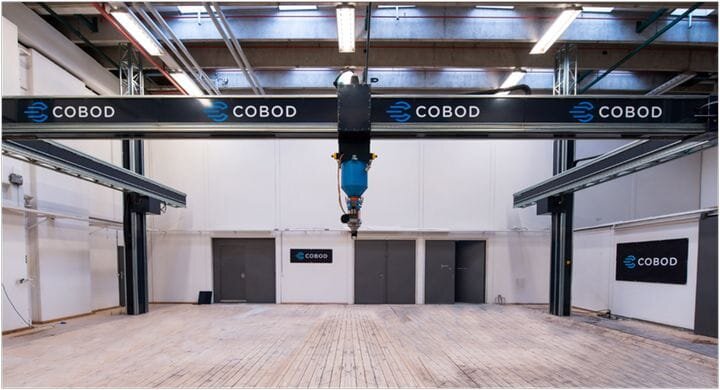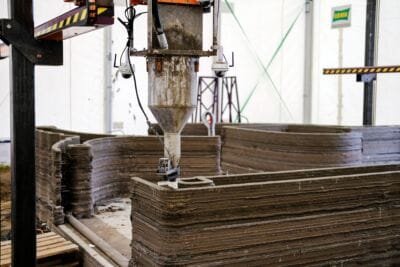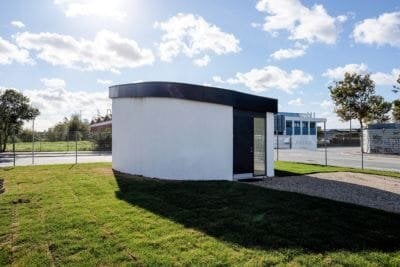
Charles Goulding and Preeti Sulibhavi of R&D Tax Savers review the applications of large-scale construction 3D printing.
Northwestern University’s recently announced its 13-foot (4m) tall HARP 3D printer capable of 3D printing large outdoor objects. The powerful device, which includes a way to accommodate excess heat generated in large 3D build projects is notable. In this writer’s opinion, increased 3D printing of large objects is just what is needed by the 3D printing industry for visibility and increased market awareness.

The 3D printing industry has been very successful in producing many types of small, often personally customized products. These include dental retainers, teeth, and earbuds. However, for mass marketing purposes the trouble with these small products is that they are literally “invisible” to the general market.
Large scale printers are capable of 3D printing high profile, high-visibility products, including:
-
Bridges
-
Cars
-
Boats
-
Houses
-
Furniture
-
Light fixtures
-
Large art pieces (including human-sized statues)
-
Concrete structures

Intel had to mark its products with the words “Intel inside” before the public realized it was really Intel’s powerful microprocessor inside the hardware that created the desired next-generation computer. By 3D printing larger, more “visible” objects, the industry could “mark” its products and capabilities in a way that can affect future generations.
Designers and manufacturers utilizing enhanced large-scale printing to make new and improved products should be eligible for R&D tax credits.
The Research & Development Tax Credit
Enacted in 1981, the now permanent Federal Research and Development (R&D) Tax Credit allows a credit that typically ranges from 4%-7% of eligible spending for new and improved products and processes. Qualified research must meet the following four criteria:
-
Must be technological in nature
-
Must be a component of the taxpayer’s business
-
Must represent R&D in the experimental sense and generally includes all such costs related to the development or improvement of a product or process
-
Must eliminate uncertainty through a process of experimentation that considers one or more alternatives
Eligible costs include US employee wages, cost of supplies consumed in the R&D process, cost of pre-production testing, US contract research expenses, and certain costs associated with developing a patent.
On December 18, 2015, President Obama signed the PATH Act, making the R&D Tax Credit permanent. Since 2016, the R&D credit can be used to offset Alternative Minimum Tax (AMT) for companies with revenue below $50MM and. Startup businesses can obtain up to $250,000 per year cash rebates that are applied to payroll taxes directly.
The Big Picture

People see and use large structures such as bridges, buildings, boats and others every single day, and these objects can be what people minds use to create their impressions and memories of their environment.
Large objects tend to illustrate their own utility. When crossing a bridge, you are automatically reminded of what it was designed to do (and very thankful for the structural integrity while driving over it)!
Large objects are therefore far easier for the public to keep at top of mind. When such large objects are 3D printed, and the general public is made aware of this, it could mean that some will recall what 3D printers can actually do for communities and society as a whole. While “big” isn’t always better, it is definitely a lot more visible.

